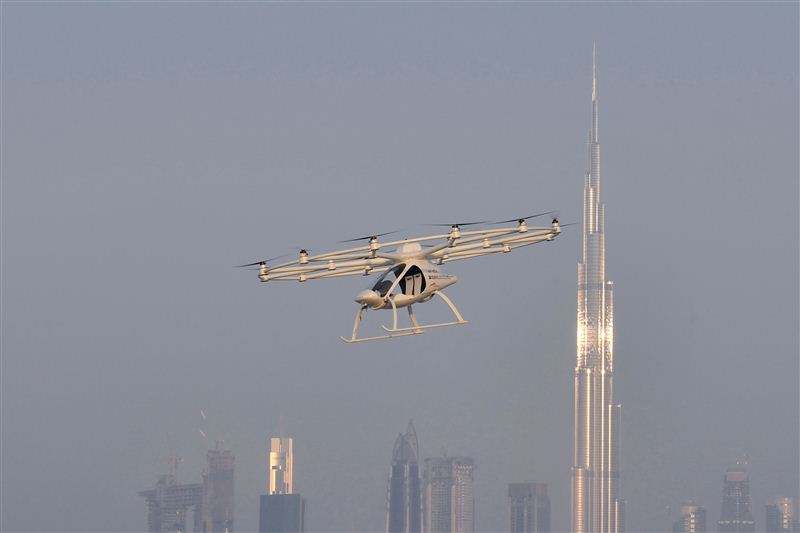Dubai’s Road and Transport Authority (RTA) has reported the first flight of a prototype for its Autonomous Air Taxi (AAT) vehicle that will be the basis for the city’s future self-flying taxi service.
Pursuing efforts to transform Dubai into “the world’s smartest city”, the city’s Road and Transport Authority (RTA) has reported the first flight of a prototype for its Autonomous Air Taxi (AAT) vehicle that will be the basis for the city’s future self-flying taxi service.
The two-seater AAT, capable of transporting people without human intervention or a pilot, has been supplied by Volocopter, a Germany-based specialist manufacturer of autonomous air vehicles. The initial test flight took place on 25th September at a location near the Jumeirah Beach Park.
Dubai has also tested the Chinese EHang 184, a single-passenger vehicle powered by four pairs of rotors.
The RTA underlines that the 18-rotor vehicle features multiple redundancies in all critical components such as propellers, motors, power source, electronics and flight controls. It is also fitted with optional emergency parachutes, nine independent battery systems, and a battery quick-charge and plug-in system. It takes two hours to reach full charge in the prototype version, but the RTA says this will be significantly reduced in the production version.
The prototype has a maximum flight time of approximately 30 minutes at a cruise speed of 50km/h, and a maximum airspeed of 100km/h. The AAT measures about two meters in height, and the diameter of the rotor rim, including propellers, is just over seven meters.
The RTA plans to make the AAT service available to the public through a smart mobility app, allowing customers to book flights, receive booking reference details and track the route of the AAT.
Over the next five years, the RTA will collaborate with the UAE General Civil Aviation Authority and the Dubai Civil Aviation Authority to ensure that the operational requirements for implementing AAT services are put in place.
The RTA has appointed US-based JDA Aviation Company, an autonomous air-vehicle safety specialist, to oversee preparations for AAT flights and manage safety. The trial operations and the process of developing legislation will last five years, during which comprehensive operational, security and safety measures will be put in place.
Earlier this year, Uber announced plans to develop urban transportation solutions based on vertical takeoff and landing (VTOL) “flying taxis” capable of autonomous operation. The company unveiled plans to deploy an initial fleet of electric-powered vehicles in Dubai and Dallas, Texas by 2020.

